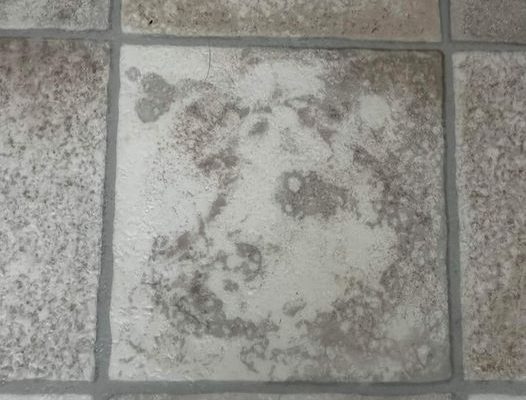Have you ever looked at a random object and thought you saw a face? It’s not just your imagination—it’s a psychological phenomenon called pareidolia. Our brains are incredibly skilled at interpreting shapes, patterns, and even sounds as something familiar, often as human faces. It’s the reason we see animals in clouds, faces in tree bark, or even a smiley face on a worn tile floor. This fascinating quirk of perception reveals just how much our brains are wired to find meaning in everything around us.

What Is Pareidolia?
Pareidolia refers to our brain’s ability to recognize familiar patterns, particularly faces, in random stimuli. This cognitive trick evolved from our need to quickly identify other people—whether they were friends or potential threats. Over time, our brains became finely tuned to recognize faces, even in objects that clearly aren’t people. Essentially, our minds are hardwired to spot faces because it was once crucial to survival.
The Tile Face: A Close-Up Look at Pareidolia
Let’s take the example of a tile floor. If you look closely at the worn texture, you might notice that it forms a pattern that resembles a face—complete with eyes, a nose, and even a faint smile. The “eyes” could be darker spots, the “nose” a slight smudge, and the “mouth” just a subtle curve. Suddenly, an ordinary piece of flooring transforms into a hidden character, waiting to be discovered. This is pareidolia at work, turning a mundane object into something a little mysterious and oddly charming.
Why Do We See Faces?
You might be surprised to learn that seeing faces in objects is incredibly common. It’s all thanks to our evolutionary history. For early humans, the ability to recognize faces and expressions was essential for forming social bonds and identifying danger. Whether spotting a friendly face in a crowd or noticing a suspicious expression, our ancestors relied on this skill to survive. This is why our brains are still so sensitive to facial patterns today—even in places where they don’t really exist.
In fact, scientists believe that this ability to see faces has shaped much more than just our survival instincts. It has influenced our emotions, social interactions, and even the way we create art. Pareidolia highlights how the human brain constantly seeks meaning in the world around us, even when that meaning is imagined.
The Artistic Side of Pareidolia
Beyond its scientific intrigue, pareidolia also has an artistic side. For centuries, artists have found inspiration in the hidden images that surround us. This form of creative expression encourages us to look beyond the surface and discover beauty in the unexpected.
Take the example of the tile face mentioned earlier. While it’s just a simple floor tile, our brains have transformed it into a natural piece of art. Shaped by time and our imagination, this accidental “artwork” reminds us that there’s beauty to be found in even the most ordinary things. In this way, pareidolia invites us to see the world through a new lens—one that reveals art and wonder where we least expect it.
Finding Beauty in the Everyday
The next time you find yourself staring at a tiled floor, gazing up at the clouds, or even examining the texture of a wall, take a moment to really observe. You might just spot a face looking back at you. Pareidolia serves as a reminder of how our minds interpret the world around us and how there’s magic hidden in everyday life. These little moments of recognition remind us that the ordinary can become extraordinary with just a change in perspective. So, go ahead and embrace the beauty of pareidolia in your surroundings—you never know what hidden wonders you’ll discover.



